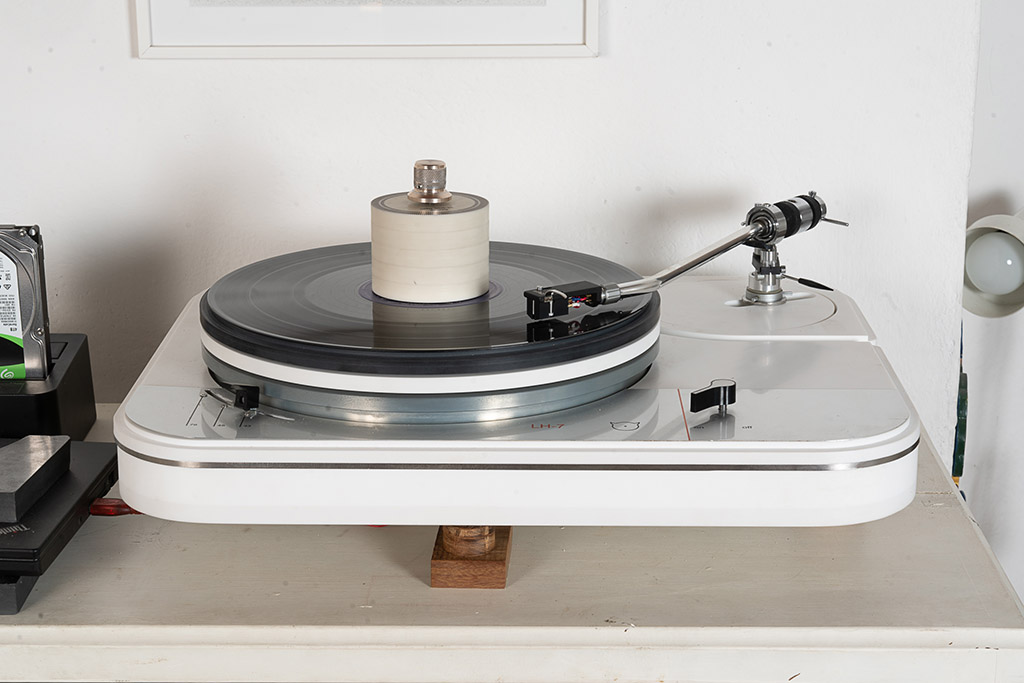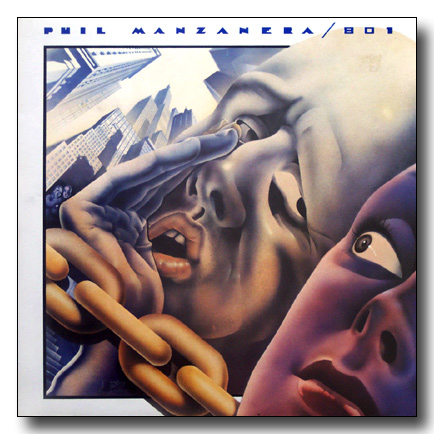








I knew Hamza el-Din years ago, after a Kavi Alexander's recorded and produced disc - i.e. "Lily of the Nile" on his Water Lily Acoustics label, and I fell in love!
His oud is a truly one-of-a-kind instrument, a 1917 Abdo Nahat-made oud, and a true masterpiece in marquetry and ivory, wood and mother-of-pearl inlaying.
I found the following photos and informations from Mr. Daniel O'Donnell of Portland, Oregon on Mike's Oud always great site (thanks a lot!).
"Following some correspondence concerning Nahat ouds. Just let me say that it is my opinion (and I'm not so experienced in the oud--but I (i.e. - the writer at Mike's Oud Forum) am a professional artist) that the following oud is one of the finest works of art I have ever seen. The workmanship and design is simply impeccable. The fine lines of inlay, the extremely fine lines of the rose, the flawless excecution is a testament to Abdo Nahat (and his sons) and his absolute control of his art. What a treasure this instrument is. This oud is owned and played by Hamza El-Din. Mr. O'Donnell, who hosted Mr. El-Din at his home, and took the photographs, was kind enough to share them and the following narrative with me, and which I now present here for your enjoyment. When I saw these photos and narrative for the first time, I was fascinated. I know there are those here who will appreciate them as well.
Mr. O'Donnell's description of the oud and his story concerning part of it's history:
The fingerboard is light hardwood inlaid into dark hardwood. The area just below the neck-body joint is a slab of mother-of-pearl. The nut is ivory or bone. The designs found on the in the squares continue on the back of the neck and upon the back of the shell, plus two long strips of mother-of-pearl culminating in mother-of-pearl traingles. One of the pegs (miftah) was broken and another was replaced at the time I made these snapshots. The pegs are of ivory, and inlaid with a very dark wood, probably ebony, in a floral design. The back of the shell is inlaid in light wood and ivory in geometric and floral designs into a very dark brown wood, probably a species of walnut. It was so well joined that I was not able to count the number of panels accurately, but there appeared to be sixteen, plus the banding strips. The bottom, again with plenty of inlaid wood and ivory. Hamza uses 12 strings and he tunes them D-G-A-D-G-C (typical arabic tuning--Jameel's note). The bridge is small, simple, and ornamented only with an overlay on the tie-block. The small soundholes (qamarat) are as intricate as the shams, and made in the same manner, i.e a thin veneer of bone or ivory laminated onto a very dark wood, and then cut out by hand with a jeweler's saw. It is a testament to Hamza's care of this oud that the soundhole has not endured any damage.
This oud is truly incredible in its beautiful appearance and in its design
and especially in its sound. It may well end up in a museum someday, but
for now Hamza still plays it regularly, and I am very glad he has such a
magnificent instrument for his music. He once told me that he would not
take it with him to any Islamic country beause he was certain they would
seize it as a cultural treasure, so he used another oud for his trips to
places like Sudan, Egypt, and Iraq in past years. It is priceless. The colors are remarkably harmonious. They are all in golden tones of wood,
and aged ivory, and mother of pearl. The shell is of a dark walnut, and the
face has aged to a beautiful golden color. There is no other color in the
inlays except some black ebony. The pegs are of ivory inlaid with ebony.
It is rumored that this oud was made for an amir of Syria. Hamza once told me that he found it in an antique store in southern
California, and it was covered with dust. The owner wanted quite a bit for
it, but recognized who Hamza was, and gave him a discount if he would play
it at his house one evening, and that was how Hamza got it. Rufie conveys a
similar version of the story, that the oud turned up at McCabe's shop in
southern California, and Hamza saw it there and acquired it - Hani Nasr was
with him at the time. One wonders how such a magnificent creation from
Syria ended up for sale in a shop in southern California, perhaps it came
here with some immigrants, who knows. If you know the history of the region presently called Syria and Lebanon,
then you know that after the collapse of the Ottoman empire, the French
assumed political and military control of some of the eastern Mediterranean
lands, and borrowed the English policy of divide and conquer. Divide the
French did, with Lebanon as an intended Christian enclave and Syria as the
Muslim/Druze enclave. Around 1945, when the region gained independence from
French domination, the government of the Syrian portion expelled a number of
Christian families to prevent civil war (in this, they were largely
successful, while Lebanon soon fell into a long civil war). The Nahat
family, which had been making ouds since the late 1800s, relocated to
Brazil. There was no demand for ouds in Brazil, so the senior Nahat did
what a lot of immigrants do, he started a chain of small markets and
businesses to give his children a higher education. He made one oud in
Brazil, and this is the oud that was recently sold from the Netherlands that
you have seen on the web. Altogether, the Nahat family made less than 50
ouds. They actually made, in Syria, a great deal of very elaborate
furniture. Now the Nahat children are grown, and they are lawyers and
professionals, and have no interest in making ouds."
Hamza El Din -- 1929-2006
Hamza El Din, the celebrated Nubian musician whose rich fusion of Arabic and Nubian sounds entranced audiences worldwide and inspired colleagues like the Grateful Dead and Kronos Quartet, died Monday, May 22nd, at a Berkeley hospital from a gallbladder infection. He was 76.
A longtime Oakland resident, Mr. El Din was a subtle master of the oud, the Arabic precursor of the lute, and the tar, the single-skinned drum that originated in Nubia, the ancient upper Nile land that was largely submerged after the Aswan Dam was built in the 1960s. Mr. El Din sought to preserve his native culture, singing Nubian songs and stories in a warm, reedy voice that merged with his instrumental overtones to create music of quiet intensity and beauty.
"It was mesmerizing. Hypnotic and trancelike,'' said Grateful Dead drummer Mickey Hart. "Hamza taught me about the romancing of the drum. His music was very subtle and multilayered.
"He was a deep listener,'' added Hart, who practiced daily for six years to master the tar Mr. El Din gave him. Sometimes the music they played together was so soft "we could hardly hear ourselves. He'd just suck you into this vortex, and all of a sudden what was quiet seemed loud in its intensity. He suspended time.''
Mr. El Din, who created music for "The Black Stallion" and other films, first played with the Dead in '78 at Egypt's Great Pyramid of Giza and joined the band a few months later at San Francisco's Winterland with a group of Sufi drummers. He was a serenely joyous man whose glowing black face was framed by his flowing white garb and headdress.
"He was sweet, gentle soul,'' said Hart, who recalled that night at Winterland when Mr. El Din had the whole crowd clapping the 12-beat rhythm of the Nubian number "Olin Arageed.'' "If you took the time to visit his sonic universe, he'd welcome you with open arms. It was a joyous experience. Jerry (Garcia) just loved to play with him.''
So did Joan Jeanrenaud, the cellist who first met Mr. El Din in the 1980s when she was a member of the Kronos Quartet. It was in Tokyo, where he was living and teaching at the time. He played his signature composition "Escalay: The Water Wheel'' for the group. "It was a heart-touching experience,'' said Jeanrenaud, who played with Mr. El Din many times, as a member of Kronos -- which featured "Escalay'' on its hit 1992 recording "Pieces of Africa'' -- on Mr. El Din's discs and on her own.
"He put himself into the music so completely that when he played, it would take you away to another place. You went on a journey to this very peaceful, emotional, beautiful place. He was a mentor to many of us.''
Born in Toskha, Nubia, in Egypt, Mr. El Din began playing oud while studying engineering at the University of Cairo. He also studied at the King Fouad Institute of Middle Eastern Music. Learning of plans to build the Aswan Dam, he quit his engineering job in Cairo and set off to preserve Nubian music before the people were dispersed. With his oud, an instrument unknown in Nubia, he traveled from village to village by donkey, gathering songs. He was playing in traditional Arabic style; it wasn't until his music acquired a distinctly Nubian flavor that it caught on.
"One day I felt the oud had a Nubian accent,'' Mr. El Din told The Chronicle in 1995. "I played for people in my village and they were mesmerized. I knew I had something.''
He had studied Western music at the Academy of Santa Cecilia in Rome, expanding his sense of harmony and musical form. After moving to the United States, he taught at various universities and then settled in the Bay Area. At Mills College, he met the esteemed composer Terry Riley, who learned something about understatement from a comment Mr. El Din made to him about singing softly.
"Through very simple means, Hamza could create a spell on an audience. His music spoke directly to the heart,'' said Riley, whose groundbreaking minimalist music has some of the same hypnotic quality. "Audiences leaned in toward his music," he said. "It wasn't in their faces.''
Riley introduced Mr. El Din to Kronos. "He opened doors for a lot of people, doors between different forms of music,'' said Kronos violinist and founder David Harrington. "We lost a great musician and a great man.''
Mr. El Din is survived by his wife, Nabra, of Oakland. A musical tribute is pending.
Jesse Hamlin, SF Chronicle - Friday, May 26, 2006
A rare YouTube footage of Hamza el-Din's playing this very instrument.
... and here another one.

%20is%20a%20French%20daily%20evening%20newspaper.%20The%20cover%20shows%20Iraqi%20dictator%20Saddam%20Hussein%20at%20the%20time%20of%20the%20First%20Gulf%20War.jpg)








.jpg)


















.jpg)







































No comments:
Post a Comment